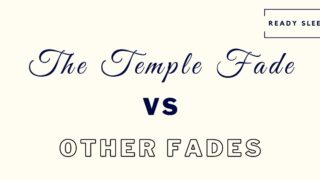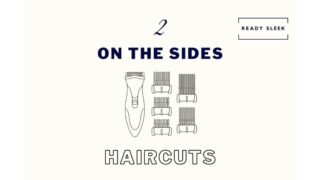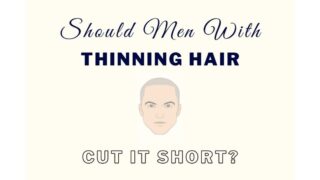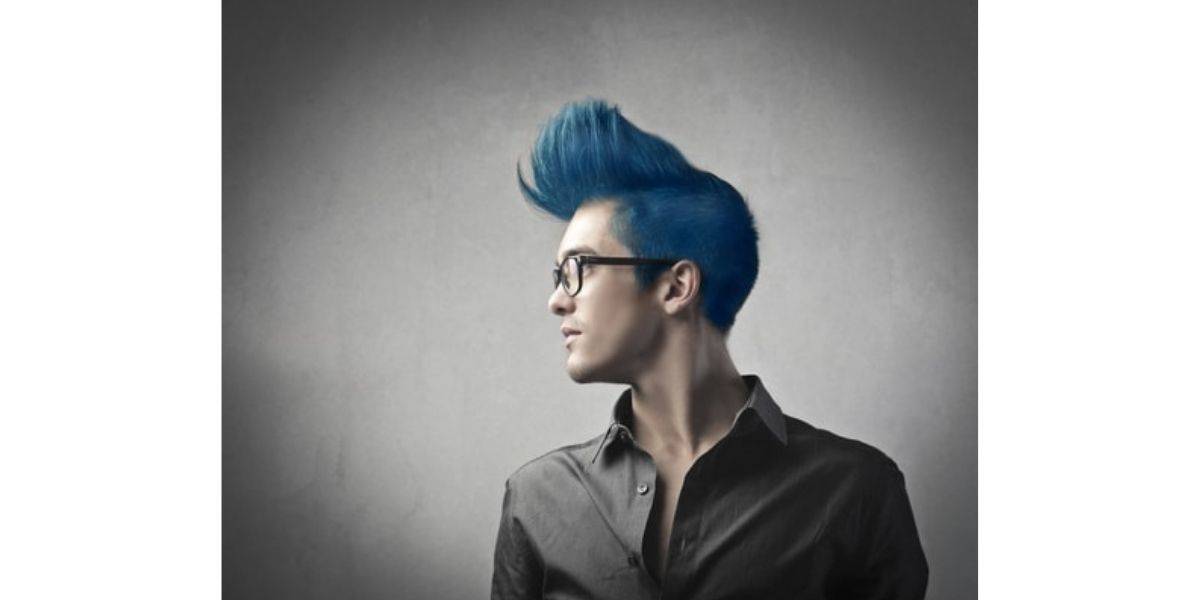The difference between hairstyles can be subtle at times. It leads to confusion and confusion can lead to disagreements between clients and their barbers.
The comb over is one style that leads to a lot of confusion. It looks similar to a lot of other classic and vintage styles.
One of the main objectives I have for the hair section of my blog is to clear up confusion like this.
To help you use the right terminology so you know exactly what you’re styling.
I’m going to go through what the comb over is and then compare it to three other similar but slightly different styles to help you learn the difference.
Let’s get to it.
What Is A Comb Over?
A comb over is a style where the hair on top is brushed or combed to one side. The parting is usually well defined, but not always.
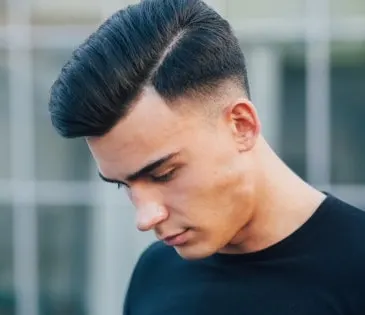
A lot of confusion comes from the fact that the term “comb over” is used to describe the awkward combing of wispy, thinning hairs across and over a balding scalp.
Although this term is also perfectly reasonable to use, it’s important to realize that they’re not referring to the same thing.
While the “comb over” in a balding sense of the term is considered a socially awkward attempt at camouflage, it is not an established hairstyle.
The comb over we’re talking about today is a real hairstyle – one where the hair on top is not an attempt at hiding a bald scalp but does consist of hair brushed or combed to one side.
The comb over is similar to a pompadour but has less vertical height and volume, as well as a more significant lean to one side or the other. If you’d like a more detailed comparison of the pompadour and the comb over, check out this article.
It has a vintage aesthetic to it, reminiscent of the classic ‘50s greaser movement much like the other styles described in this article.
Because of this, it works very well with “shinier” products like oil-based or water-based pomades and hair waxes.
Hair gels are fine too as long as you’re ok with a stiff hold (much like with water-based pomades).
If you’re looking for a more matte finish, try a hair clay or a hair paste instead.
Comb Over Vs Side Part: What’s The Difference?
The comb over has more volume and height than a side part which is traditionally slicker and flatter. This is despite both styles having the hair brushed or combed to one side or the other.
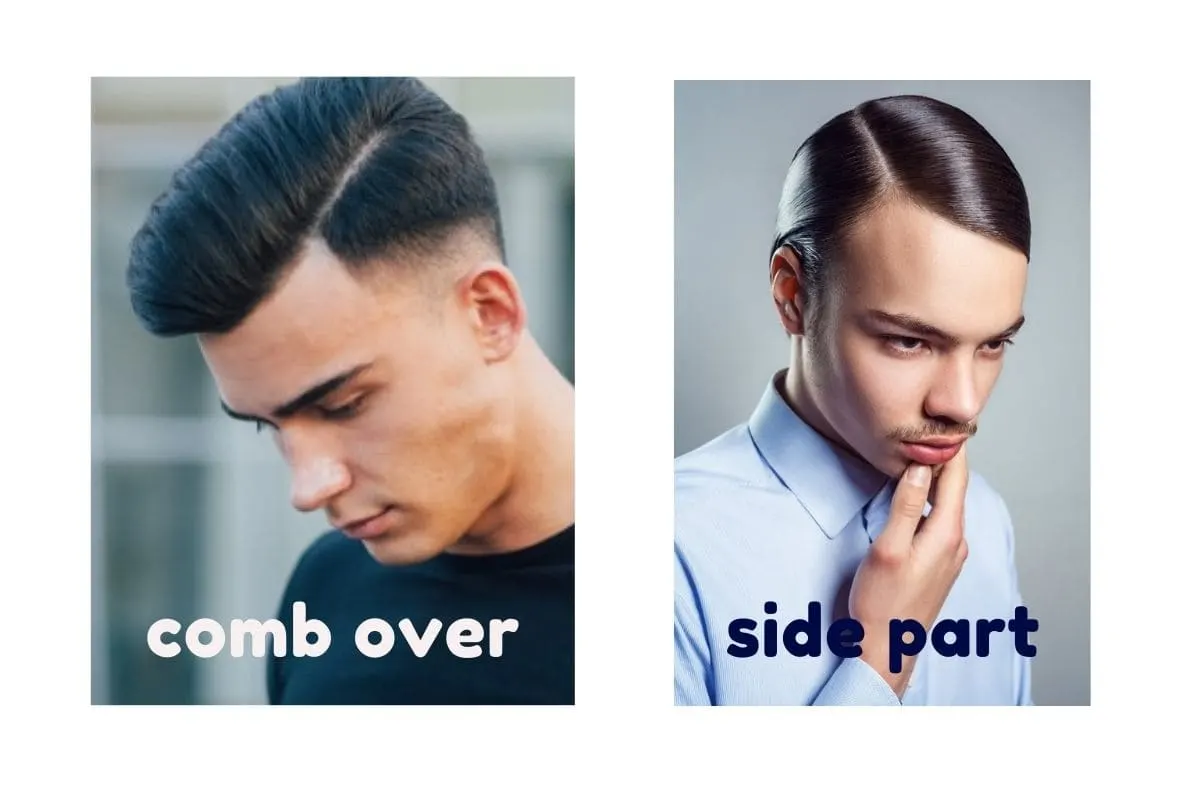
Although both have the parting defined, noticed the additional volume the comb over has
This one is by far the most confusing and difficult comparison.
The reason for this is that both styles have the hair brushed over to the side and a traditional comb over style typically has the side parting defined in any case.
Some would argue that the two styles are one and the same and in many ways, I wouldn’t argue back.
But if you were going to pick out a single difference between the two it would be the volume.
Comb overs are just a little taller and fuller than your traditional side-slicked side part.
If you were looking to style a comb over you’d do well to apply a bit of pre-styling mousse before using a blow-dryer and a round brush to sweep it all up and to the side.
Just something to give it that extra bit of volume.
You could think of a comb over as a style in between a pompadour and a side part. It has some volume – like a pompadour. But instead of having everything swept backward, it’s swept to one side or the other.
A traditional side part is usually slicker and flatter, with less volume and height.
Having said all of this, it’s one instance where using the two terms – “comb over” and “side part” – is generally considered interchangeable.
But if you were looking to nitpick, consider the volume.
How To Choose
Here are things to consider when choosing between the voluminous comb over and the slicker side part:
1. Length
If you don’t have much length to work with, you won’t be able to build height or volume in the first place.
Go for the traditional side part instead. Try the comb over when you’ve got at least 4 to 6 inches of length.
2. Thickness
Men with thinner hair often lean toward fuller and more voluminous hairstyles. Put simply, it makes the hair look less thin and less flat.
Comb overs may be preferable for these men if they’ve got enough length to pull it off.
3. Preferred Aesthetic
While both styles have a classic and vintage feel to them, the volume of the comb over does make it look a little more vintage than a standard side part style.
It just looks a touch more 1950s than your usual side part style.
Some men – myself included – love this. Others, however, may prefer a basic, flatter, side part style if they’re looking for something that’s more modern but still has a blended vintage feel to it.
Comb Over Vs Quiff
The quiff is a style where the forelock (front hair) is brushed or combed upward, standing tall and away from the forehead. In contrast, the comb over has all of the hair swept to one side or the other.
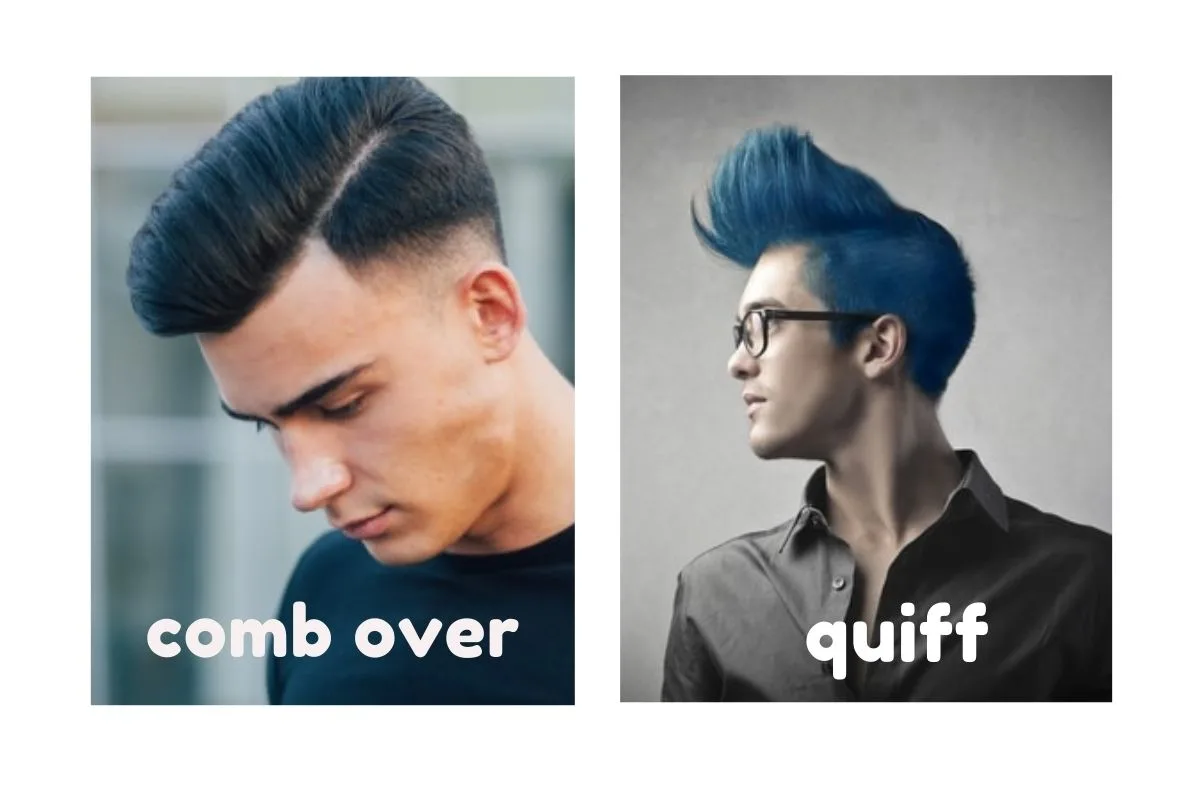
[From Shutterstock]
These two styles are very different, despite both having their roots in the 1950s era.
There are many variations of the quiff given the fact that the forelock can be styled in many different ways. It’s similar to the pompadour in that it prioritizes height. However, the quiff only has the forelock swept upward and not all of the hair.
It can be big, small, matte, textured, slick, and so on.
The comb over is simpler, in this respect. Although you can achieve different textures when styling it, you know what you’re going to get when you’re brushing or combing everything to one side or the other like this.
Both styles may have “classic” roots just like many other men’s hairstyles, but the quiff often has a more “modern” feel to it than a traditional comb over.
A modern quiff has a lot of volume at the front before graduating into shorter hair as you go backward, with the sides and back trimmed down short.
More modern quiffs also usually have a more matte appearance to them, styled with low shine products such as clays, pastes, and putties.
How To Choose
If you’re trying to decide between a quiff and a comb over, consider the following factors:
1. Length
If you’re looking to style a comb over, you’ll need more length than you would if you were styling a quiff.
In fact, you could even style a short and small quiff with short hair. You really don’t need much length to puff the front up a little.
A quiff is a quiff, after all.
However, a comb over does require enough length to sweep everything up to one side or the other.
At least 4 inches.
If you don’t have enough length, try a flatter side-slicked style. Alternatively, go for a good ol’ fashioned quiff.
2. Classic Vs Modern
As I mentioned, men who prefer a more vintage aesthetic would be better off styling a comb over than a quiff.
The glossier and taller you make the comb over, the more it’ll resemble that of the ‘50s greaser movement – a classic era for men’s hairstyles.
Quiffs, particularly the quiffs that are styled with low shine/high texture products, would be better for men who prefer a more modern aesthetic.
3. Face Shape
Men with rounder and shorter face shapes often go for taller hairstyles in an attempt to elongate the face.
It’s a very effective stylistic device – using hair to adjust the shape of your face.
It just makes sense. If you feel as though your face is a little rounder or shorter than you’d like, add some length by choosing a style that prioritizes vertical height.
The quiff will add more height than a comb over given the fact that it isn’t swept over like a comb over is.
Yes, the comb over does rely on a bit of height too, but won’t give you as much as a quiff would when we’re talking about the same length of hair.
The same goes for the opposite.
If your face shape is one of the “longer” ones (eg. oblong), the height of a quiff is likely to make it look even longer. Soften things up by going for a “shorter” hairstyle instead.
In this instance, a comb over would be more suitable than a quiff.
Comb Over Vs Slicked Back
Slicked back hair has all of the hair swept directly backward and has a typically flat and glossy appearance to it. In contrast, the comb over has the hair swept to one side and has more volume than a traditional slicked back style.
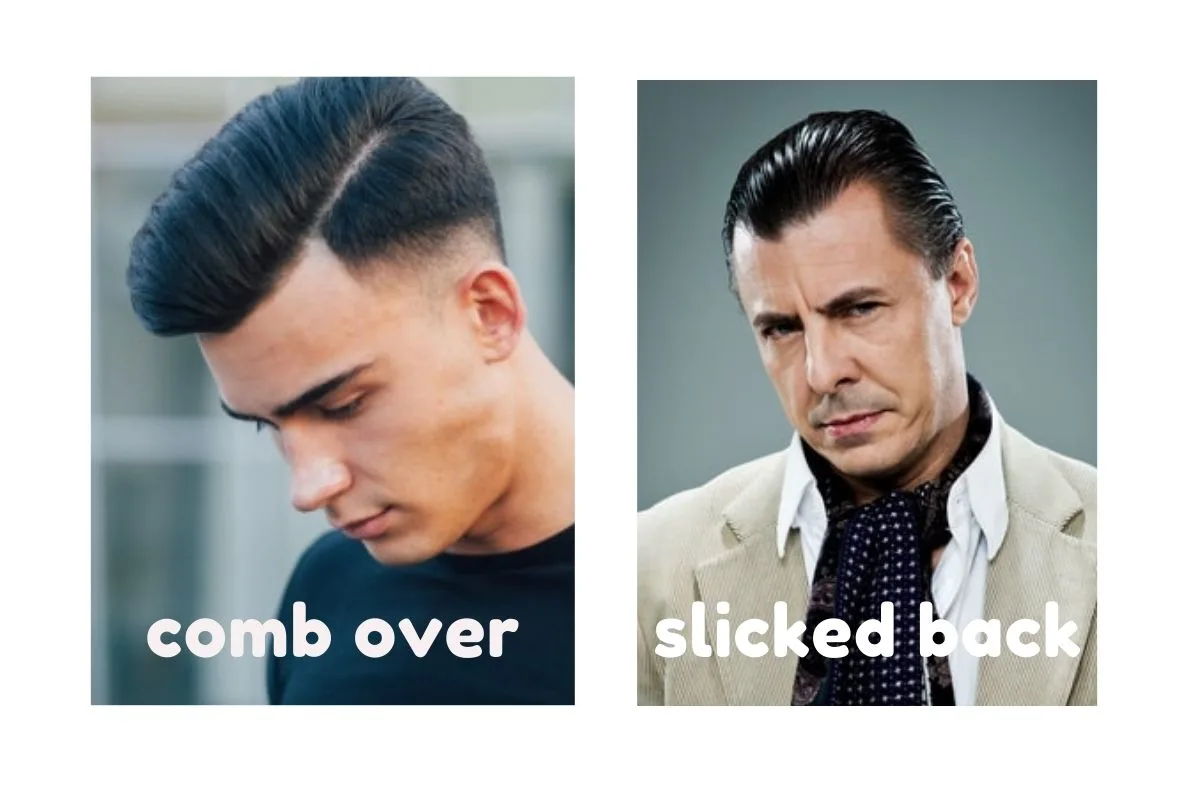
Both styles have a vintage feel to them and do require the hair to be of a certain length before it’s possible to achieve them.
The main difference is the direction in which the hair is brushed or combed.
As the name would suggest, the slick back is a style where the hair is literally slicked back and not to one side or the other.
It’s known for its simplicity and versatility. It doesn’t take long to style and has a characteristic formal and defined aesthetic to it.
The comb over also has a formal look to it, even more so than a slicked back style at times.
Other than the direction of combing, another key difference between the comb over and the slick back is volume.
Comb overs generally have a little more volume and height than the slicked back style. A traditional slick back is flatter than a comb over. It focuses much more on definition than it does on volume.
How To Choose
Choosing between the comb over and slick back is pretty simple. Use the following factors to guide your decision:
1. Length
Slicked back styles are very dependent on length – even more so than a comb over.
In fact, you’ll be able to style a comb over sooner than you would a slick back.
Yes, it’s possible to train hair to slick back when it’s shorter than you might usually need it.
But sometimes, it’s simply too short to slick back and have it stay that way throughout the course of the day, no matter how much heavy-hold product you apply to it.
Combing it over to the side – as you would with a comb over – does still require enough length (at least 4 inches), but less than that of a slick back.
So, if you haven’t got enough length to go full-on into the slick back, the comb over may be a more suitable option for you.
2. Thickness
Slicking the hair directly backward and leaving it glossy and flat can make thin hair look even thinner.
When you’ve got a style that focuses on the definition and not on volume, thin-haired men may find that the flatness makes their hair lack fullness.
Add this to the fact that the shiny products typically used to style slick backs may reveal too much of the scalp and you may conclude that thin-haired men should avoid the style altogether.
Sure, comb overs can be glossy too and yes – this may well reveal too much scalp when you’ve got thin hair as well.
But the added volume and height that comb overs usually have compared to that of the slick back does make it more beneficial for thin-haired men. It gives it an added sense of fullness.
Slick backs work best for men with thick hair, despite the fact that thick hair is notoriously stubborn to slick back. It does look great though.
For a full guide on how to slick back thick hair, check out this article.
3. Ease
There’s just something so simple about slathering on some water-based pomade in the morning and slicking everything all back.
You could be done in 20 seconds and you may not even need a comb to do it (although this is recommended).
Comb overs are also simple but they’ll usually take a little longer to perfect, especially if you were really getting some good volume using a round brush and a blow dryer, for instance.
Overall, both styles are pretty simple to style. However, the slick back will always be considered the simpler of the two.
If simplicity and ease of styling were important to you, consider the slick back instead of the comb over.
Conclusion
The comb over is one of the toughest styles to define and the main reason for this how similar it is to other classic and vintage hairstyles.
Hopefully, this article has given you the descriptions and visual reminders to clear up any confusion you had for the long haul.
Enjoy.
Ready Sleek founder. Obsessed with casual style and the minimalist approach to building a highly functional wardrobe. Also a fan of classic, vintage hairstyles.

![Comb Over Vs Side Part Vs Quiff Vs Slicked Back [Pics]](https://www.readysleek.com/wp-content/uploads/2021/05/comb-over-vs-side-part-vs-quiff-vs-slicked-back-Featured-Image-720x405.jpeg)
